My weekly potpourri gathered from the archives features... a little game. I decided to pick a month at random and see how far I had to get into the month to find all five of the memes featured in this page. If possible, I would try for two, and since Critters occupy such large share of my portfolio, I placed a limit of five of my faves, to be divided equally (2 1/2 apiece) between Misty and Eileen. I picked the month of January, 2012 for no good reason except maybe it reminds me of what I need to look for next month. I had to go all the way to the 18th before I found a couple of sky shots.
CRITTERS:
Great Blue Heron, January 1, 2012
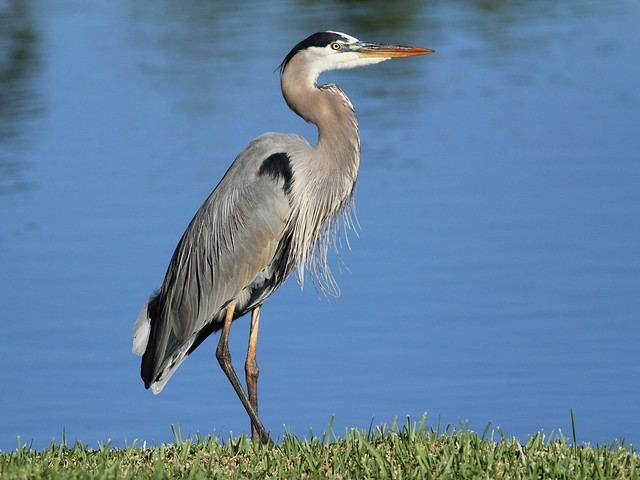
White-eyed Vireo, January 12, 2012
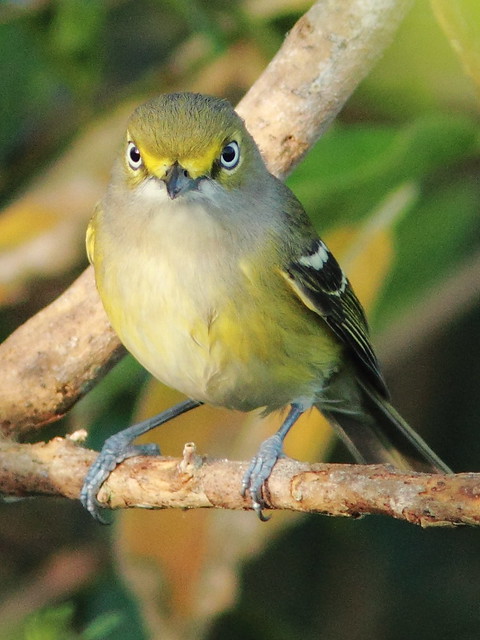
Green Heron, January 13, 2013
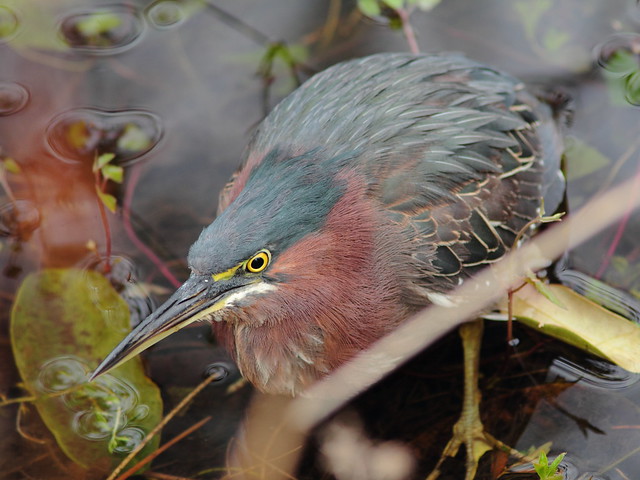
Bald Eagle, January 15, 2013
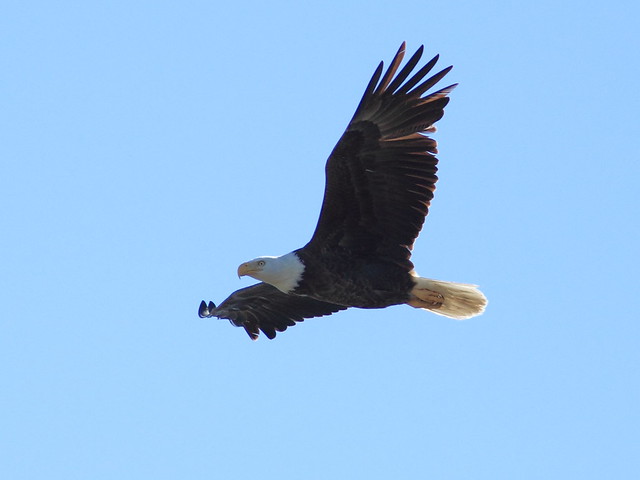
Painted bunting, January 18, 2012
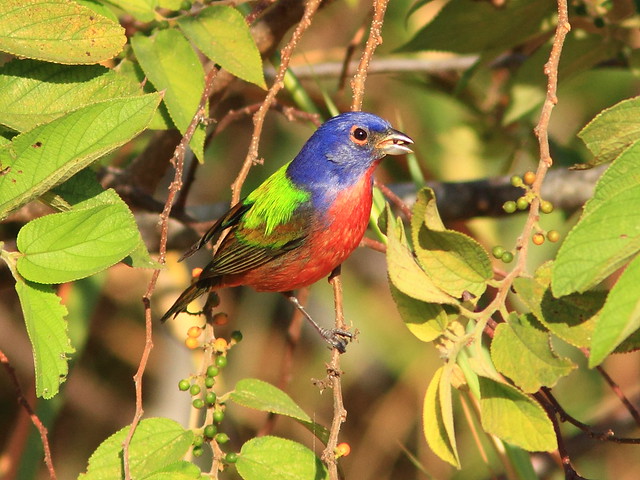
Linking to Misty's CAMERA CRITTERS,
Linking to Eileen's SATURDAY'S CRITTERS,
________________________________________________
FENCE:
Sandhill Crane, January 8, 2012
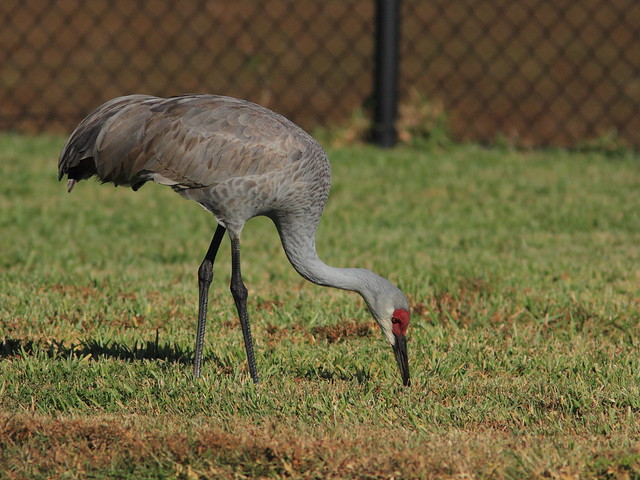
Cooper's Hawk, January 24, 2012
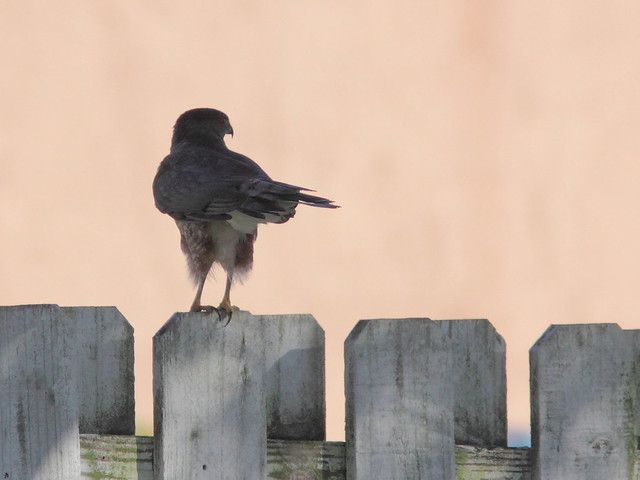
Linking to GOOD FENCES by Tex (Theresa).
________________________________________________
SKYWATCH: A cloudy morning
January 16, 2012
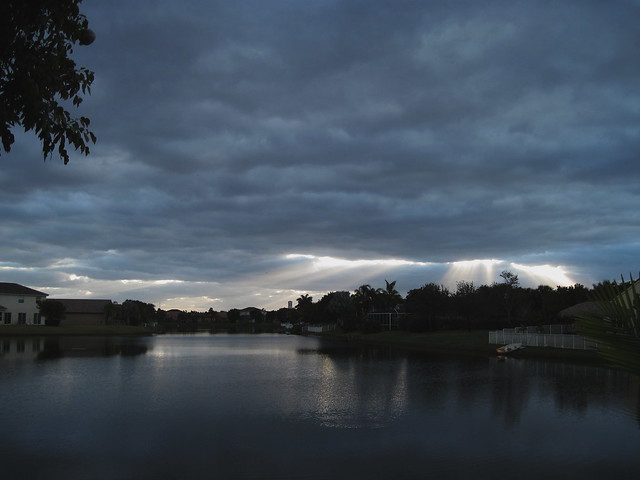
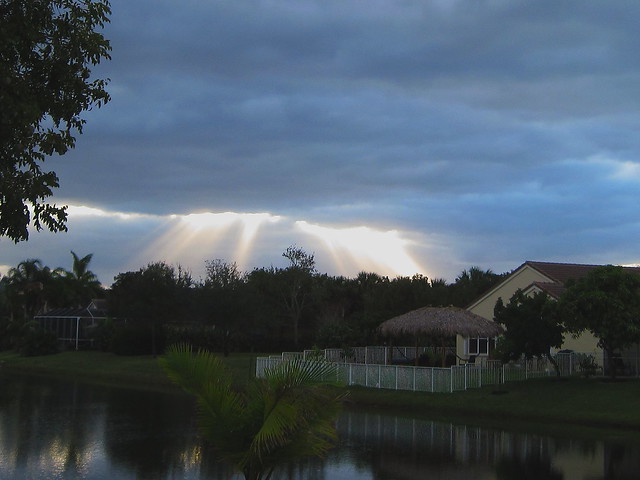
Linking to SKYWATCH FRIDAY by Yogi, Sylvia and Sandy
________________________________________________
REFLECTION: Little Blue Heron
January 1, 2012

Double-crested Cormorant, January 18, 2012

Linking to WEEKEND REFLECTIONS by James
________________________________________________
Please visit the links to all these memes to see some excellent photos on display
________________________________________________
Based on the belief that Earth's rotation is gradually slowing, December 22, 2014 was touted by media to be the longest night in its history. However, because of geologic factors and tidal effects related to differences in the position of the moon there are irregularities that can temporarily increase the rate of rotation. Therefore, this year's Winter Solstice must take second place to the record set in the year 1912.
Winter arrived at 6:04 PM on December 21. That morning the sun rose far to the southeast, and our lake was crystal clear:
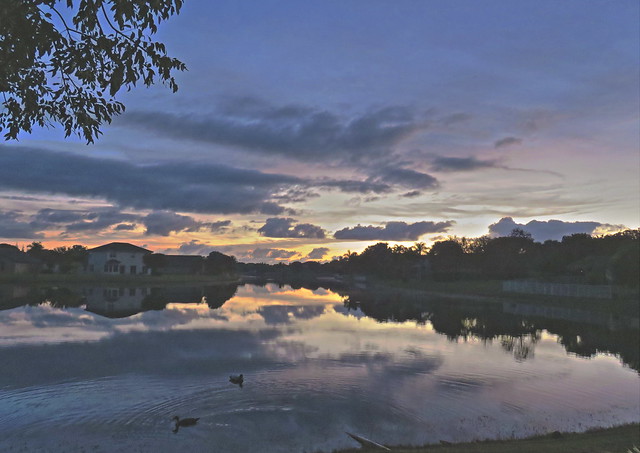
The next morning did not feel as if winter had arrived. The effects of a cold front had diminished, and it was a balmy 60 degrees F (15.5 C), with calm wind. The lake in our local wetlands reflected those conditions. Looking northwest towards the Everglades, opposite the rising sun, the sky was aglow, and the white dot of a Great Egret punctuated the landscape:
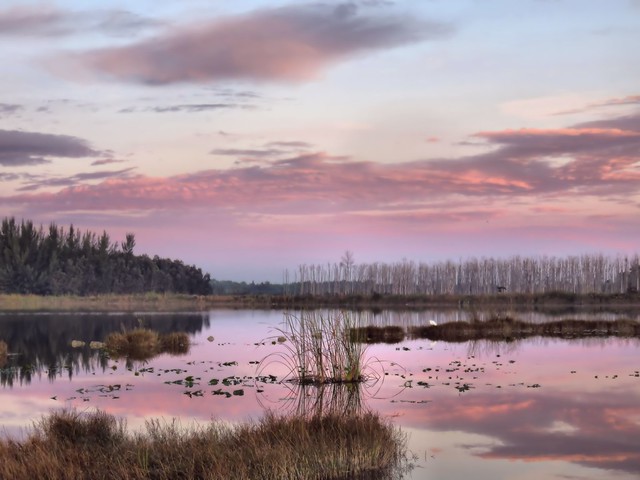
To the north, gathering clouds portended a change in the weather:

The egret's image is a bit soft because of the low light,...
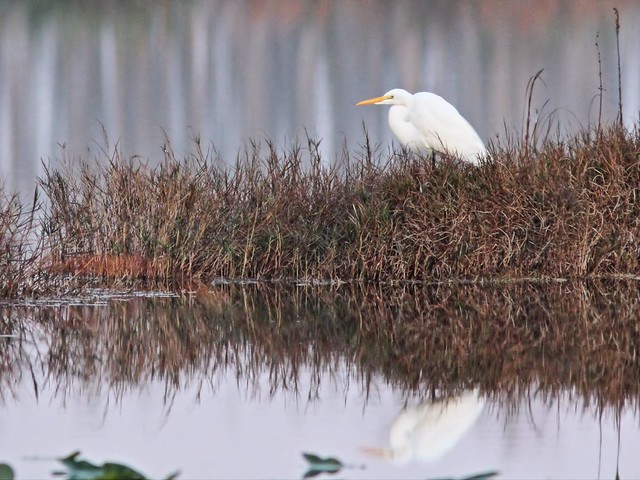
...but the light's warmth added beauty as it took flight:

The previous morning, a Great Blue Heron occupied a nearby rock:
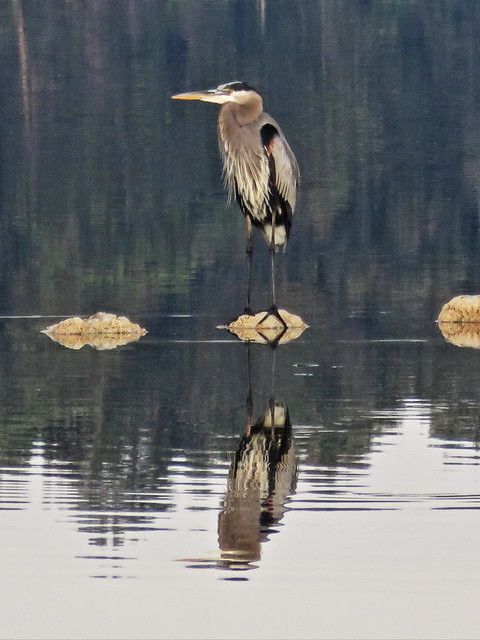
Blue-gray Gnatcatchers foraged for spiders among the Brazilian Pepper berries:

A Gray Catbird gobbled up a ripe berry:

Palm Warblers moved among the branches:

High up, an elusive Least Flycatcher briefly appeared:
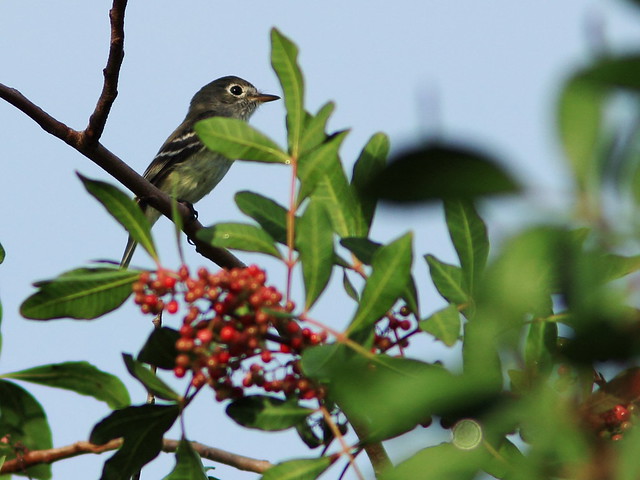
A White-winged Dove peered down curiously from a Live Oak:
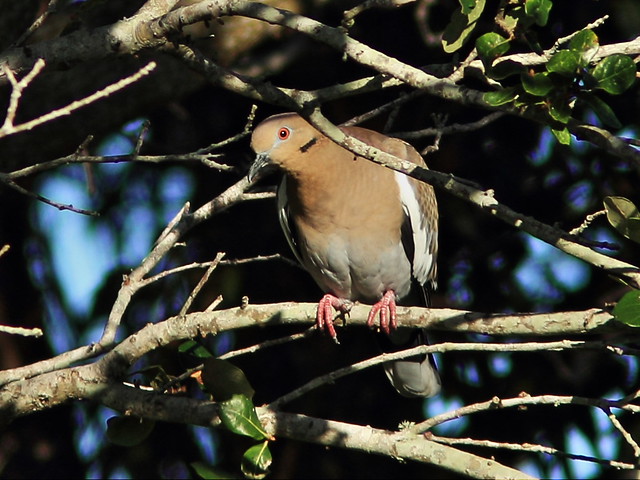
I am still testing my new pocket camera, a Canon SX 700 HS with a 30 power zoom lens. I used it for the landscape photos above, and tested its macro capabilities. Hand held, it captured some remarkably clear images from as close as 3/2 inch (2 centimeters). I just purchased a light-weight tripod which should improve its performance.
A Honeybee:

A tiny flower sepal:
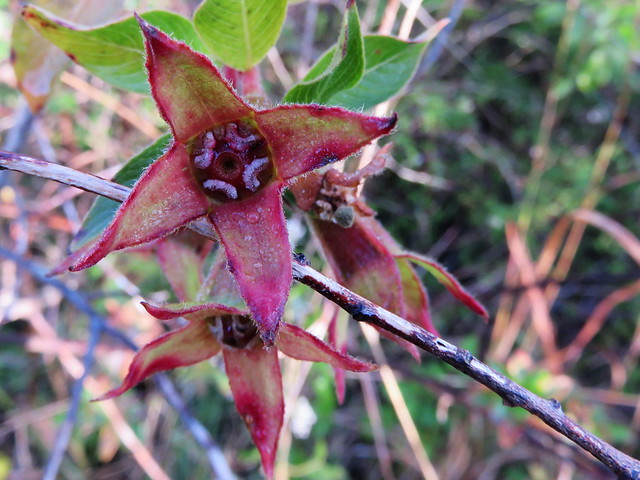
Pepper berries look big as balloons:

A dewdrop on a blade of grass:
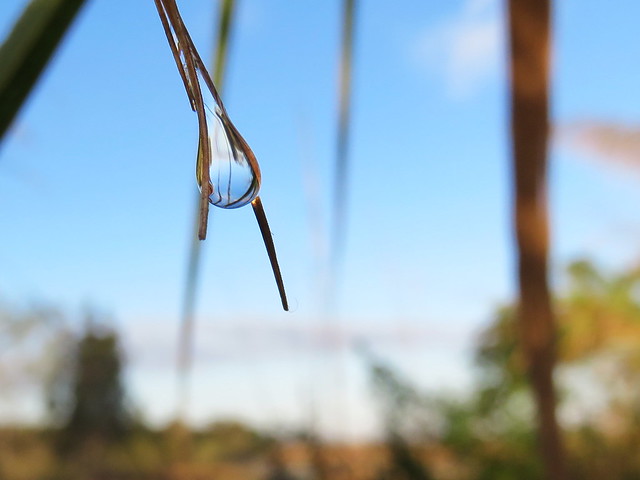
On the way home the little Powershot provided me with quite a sharp image of a cooperative Northern Mockingbird:
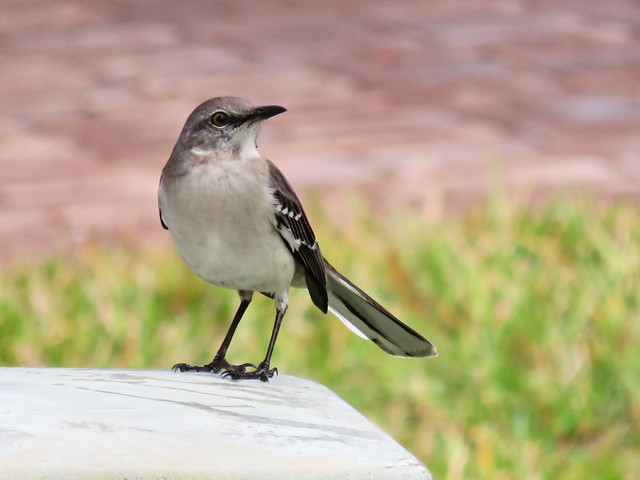
When all was said and done, we slept right through the longest night of our lives!
My weekly potpourri gathered from the archives features... meme themes featuring
CRITTERS: Doves!
The Mourning Dove is an abundant breeding resident of all 48 lower states and parts of southern Canada. Avidly hunted, the biomass of Mourning Doves harvested each year is said to exceed that of all other game birds combined. The US Fish & Wildlife Service estimated their US population to be 274 million in 2003, and that 14.5 million were taken by hunters that year.


The Common Ground-Dove is fairly restricted to the southern third of the continental 48 states, with scattered reports of sightings up the coasts and into the Great Lakes area. I found its nest with two eggs near our south Florida home this fall. Although it is known to be an established breeding bird here, it was the first such finding in Broward County.

Unfortunately the eggs and its well-concealed ground nest were destroyed, probably by a flash flood along the side of the road where they were located.
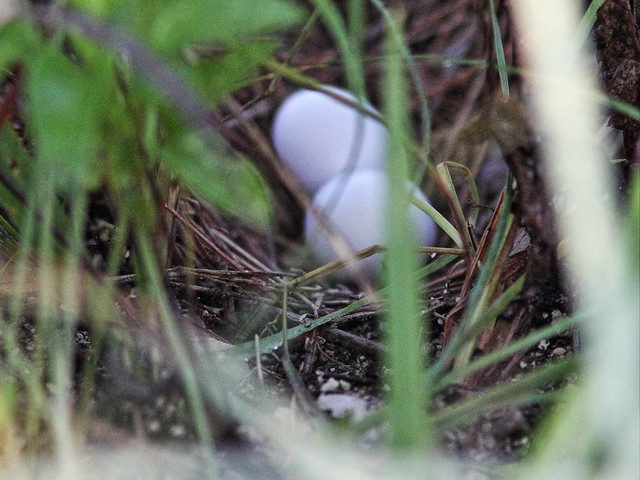
Until about the 1980s, the White-winged Dove's US range was restricted to the far southern reaches of states along the US-Mexico border. Since then it has spread into most of the southern states, with Increasing numbers being reported as far north as southern Canada.

The Eurasian Collared-Dove ranges all over Europe, Asia and into the Middle East and North Africa. It was introduced into the Bahamas only forty years ago and now has spread over nearly the entire continental US and even into Canada. Most Eurasian Collared-Doves appear rather dark, as this individual:
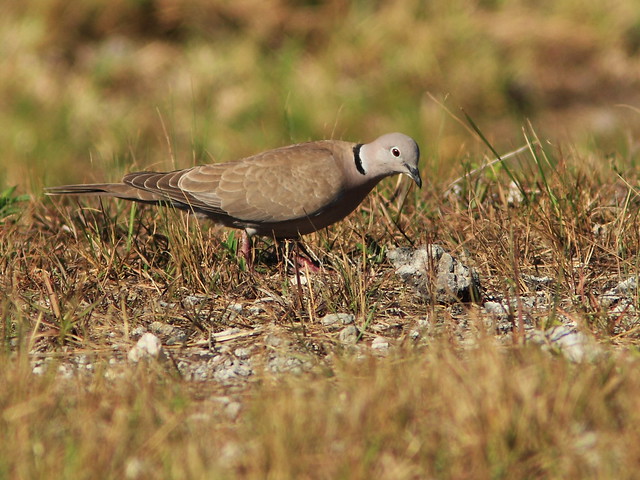 The Eurasian Collared-Dove below is particularly light in color. Its darker under-tail coverts help distinguish it from the smaller African Collared-Dove (also called Ringed Turtle-dove, common in captivity and sometimes released at weddings and other celebrations but rarely seen in the wild).
The Eurasian Collared-Dove below is particularly light in color. Its darker under-tail coverts help distinguish it from the smaller African Collared-Dove (also called Ringed Turtle-dove, common in captivity and sometimes released at weddings and other celebrations but rarely seen in the wild).
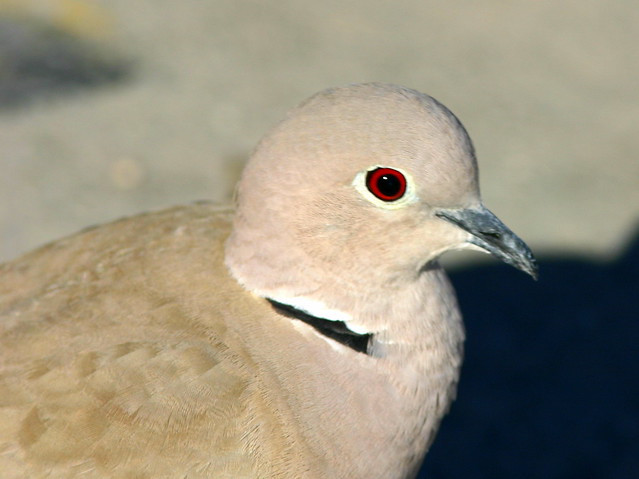
This collared-dove is almost white, and appears to have white under-tail coverts and strongly contrasting black flight feathers, possibly descended from hybrids with domesticated African Collared-Doves. Note the limited black base of its middle tail feathers:

The Rock Dove was renamed Rock Pigeon in 2002 to conform with that used by the British Ornithologists' Union. True, their common name in the US was simply "pigeon." This Rock Pigeon displays a plumage pattern close to that of the original European stock:

We see Rock Pigeons in many shades, from pure white...

...to nearly black:

Linking to Misty's CAMERA CRITTERS, and to Eileen's SATURDAY'S CRITTERS,
________________________________________________
FENCE: Mourning Dove at Chapel Trail Nature Preserve:


Linking to GOOD FENCES by Tex (Theresa).
________________________________________________
SKYWATCH:
A flock of White-winged Doves:

This Eurasian Collared-Dove demonstrates the extensive white tips of its tail feathers, almost half way from their ends, with the black on the central feathers extending 2/3 of the length of its tail.
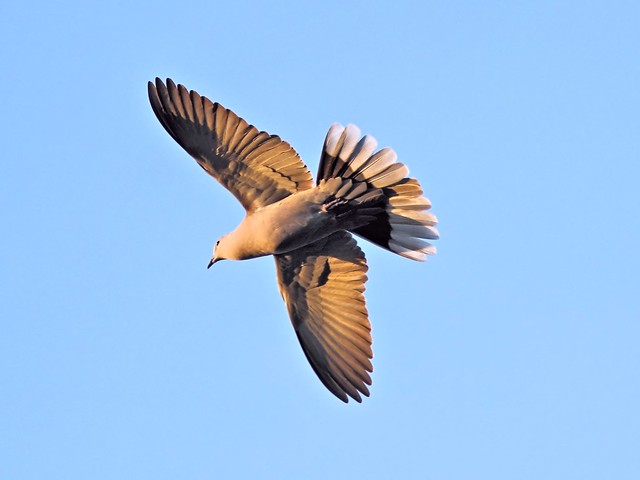
Linking to SKYWATCH FRIDAY by Yogi, Sylvia and Sandy
________________________________________________
REFLECTION: I couldn't find any reflections of doves, but while I searched my archives for photos marked "dove" I found one, and just missed another.
This Tricolored Heron "dove" after a fish...
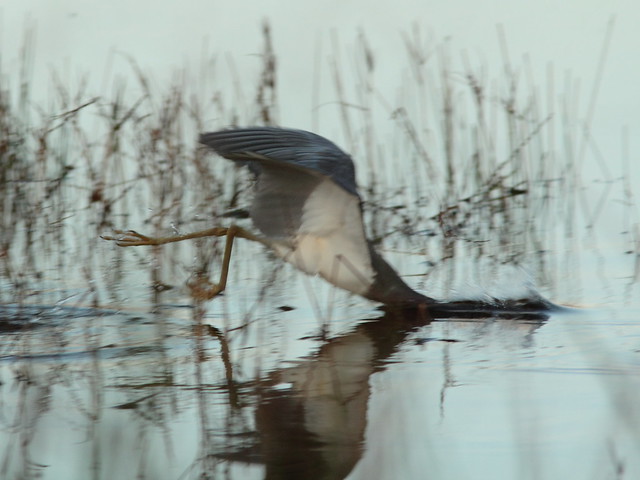
...and I just missed the reflection as this Brown Pelican "dove" into the ocean off Fort Lauderdale, Florida. You must imagine it between these two photos:
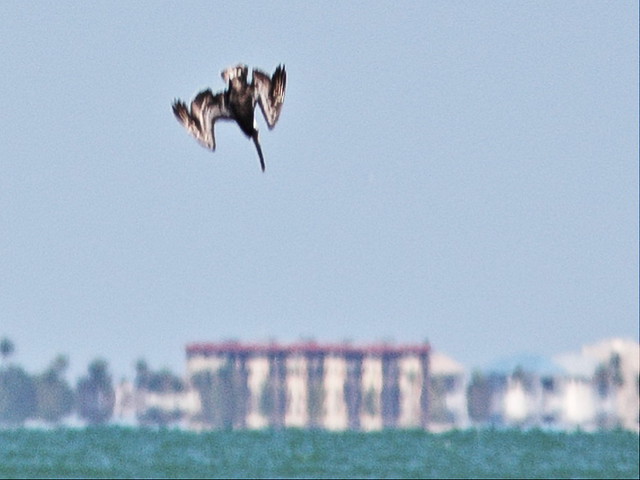
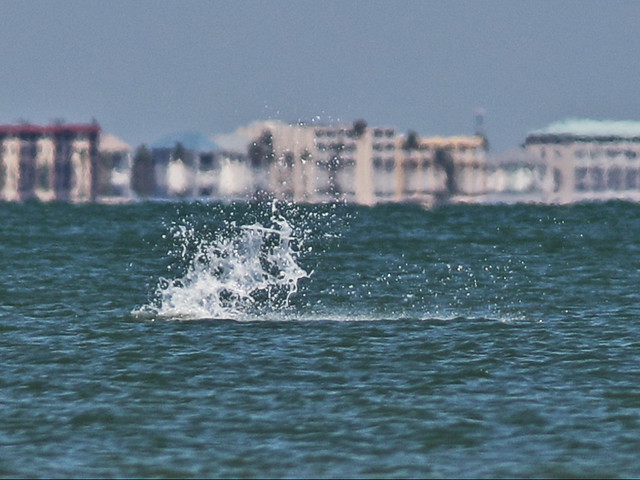
Linking to WEEKEND REFLECTIONS by James
________________________________________________
Please visit the links to all these memes to see some excellent photos on display
________________________________________________
The cold front had worked its magic. The previous two days of heavy clouds, intermittent showers and increasing winds made it unwise for us to venture very far out into the wetlands next to our south Florida home. This morning we were out about 10 minutes before dawn. The sky was already blue, with the light reflecting white off the scattered cirrus clouds and a waning moon shining brightly.

The temperature had dropped to the high 40's (~9 degrees C) and the northwest wind was barely perceptible. By Illinois standards it was shirt-sleeve weather. A light jacket sufficed for me, but Mary Lou was layered in fleece and had her hands in her jacket pockets as we walked the gravel road. She always says that she was born in December and hasn't thawed out yet!
A bit of background-- We have been watching a Bald Eagle nest near our home over the past eight breeding seasons. The pair of eagles had come to be called Pride and Joy. At the end of this October, Joy, the female disappeared. Pride seemed to miss her. He continued to add large quantities of sticks to their already huge nest.
Bald Eagles generally mate for life. If a male loses his mate he searches far and wide to bring a new female into his territory. True to form, Pride suddenly showed up with a new companion, a female who was about four years old, just molting into her full adult (5th year) plumage. We did not know what became of Joy.
He presented her to the enthusiastic crowd of eagle-watchers on December 7. She is on the right and is quite a bit larger than Pride. Note the dark streaks in her white head and tail:
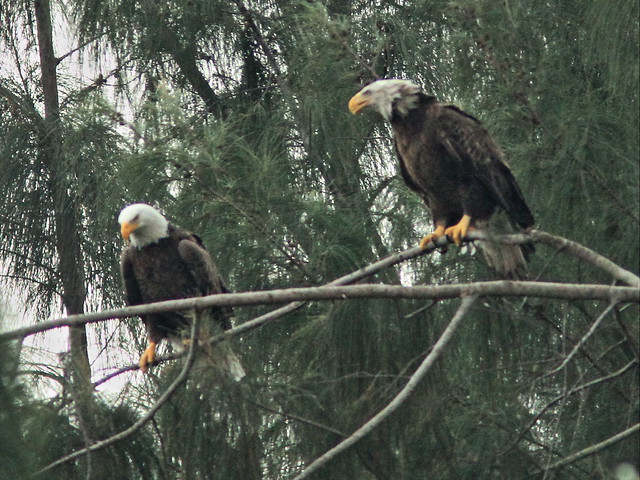
As usual, Mary Lou's faster pace moved her several yards ahead of me. At 6:55 AM, one minute before sunrise, a Bald Eagle suddenly flew low almost directly over her head. I quickly raised my camera and immediately learned that I had forgotten to turn it on! By the time it was operational the eagle had almost disappeared behind the trees. All but one of my series of shots missed the mark, but a single clipped-wing image provided evidence that it was an early fifth year bird, almost certainly Pride's new companion!
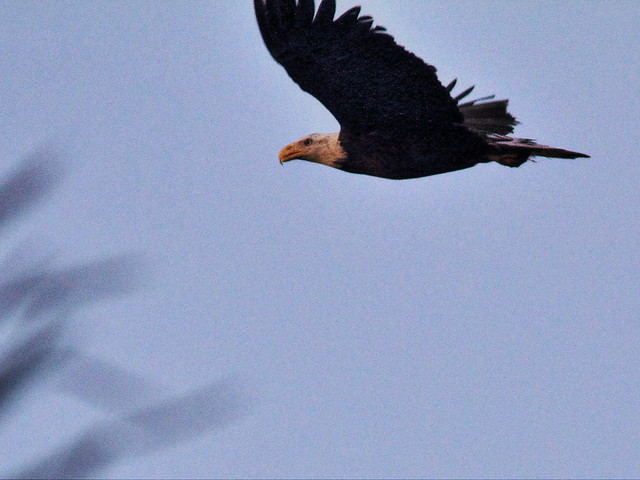
By the time we reached the Harbour Lake water conservation area we were still shrouded in shadows but the sun had reached the treetops across the lake.
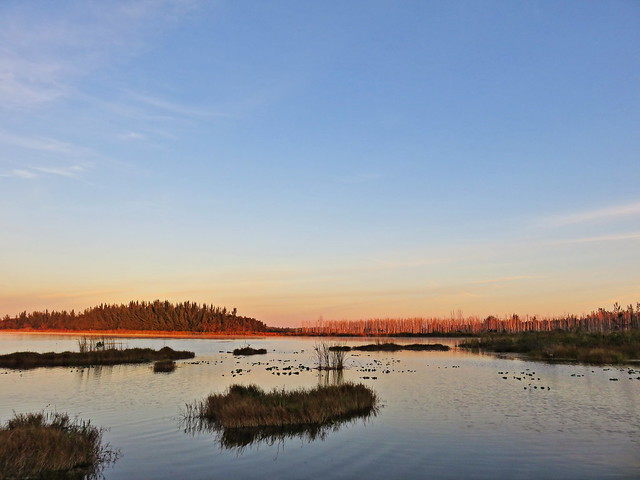
In the distance, I nearly ignored a large bird flying eastward, thinking it to be a heron. To verify its identity I used my camera as a spotting scope and saw that it was a Bald Eagle. I was able to snap only two shots before it disappeared behind a grove of trees. Using Google Earth, my best approximation of its range was 0.45 miles (730 meters), so the photo had poor resolution. Back home, the view on the computer screen revealed it to be an adult Bald Eagle with one leg dangling down.
This photo was taken at 07:19:57 and is cropped and sharpened:

This next photo is stamped two seconds later. With this one I modified the color temperature and increased the dynamic range as well as strengthened the sharpening in an effort to better visualize the eagle's legs. They shows that the right leg is hanging down:
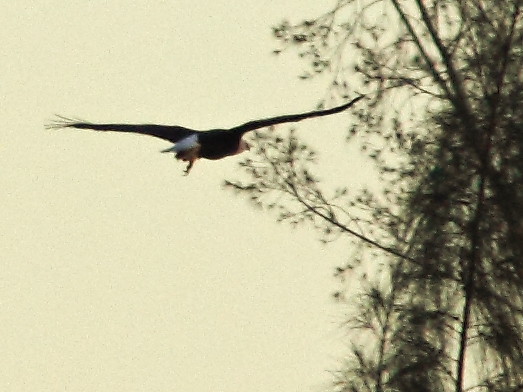
I walked to the north, closer to where the eagle had disappeared, but only two minutes later (at 07:22:39 AM) the eagle once again flew into view, this time flying to the the WSW, at a range of approximately 0.19 mile (303 meters). The time stamp for this photo is 07:22:59 AM:

This is the sharpest of a burst of photos I took as the eagle flew away from my position (time stamp 07:23:01 heavily cropped):

The eagle disappeared into the distance, flying WSW towards the Everglades. I wandered northward to the wet prairie, where I captured a delightful view of a Great Egret foraging in the slough:
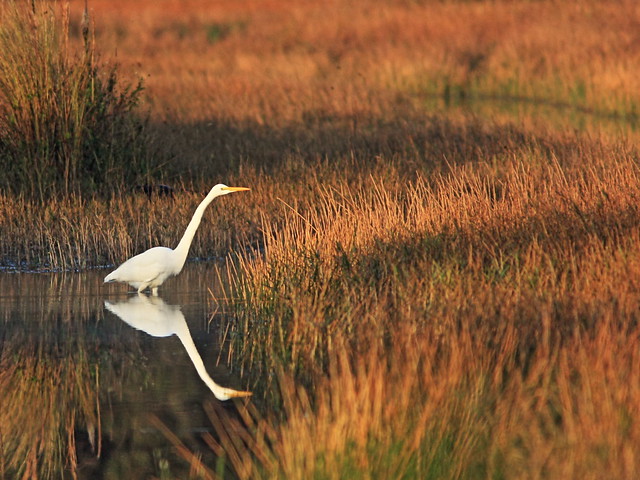
A Great Blue Heron flew in...
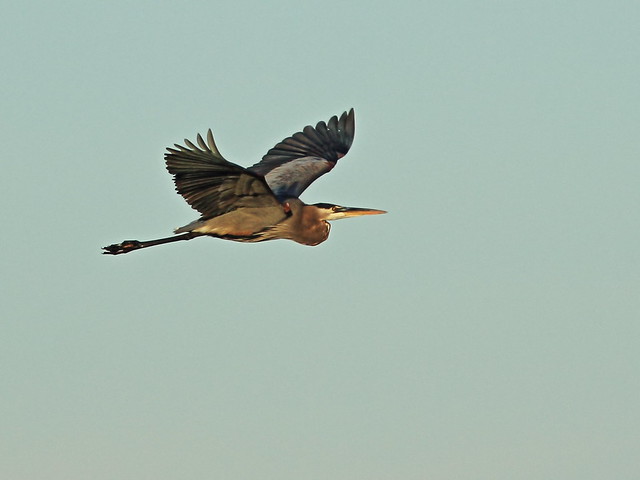
...and settled on a snag at the northern end of the prairie:
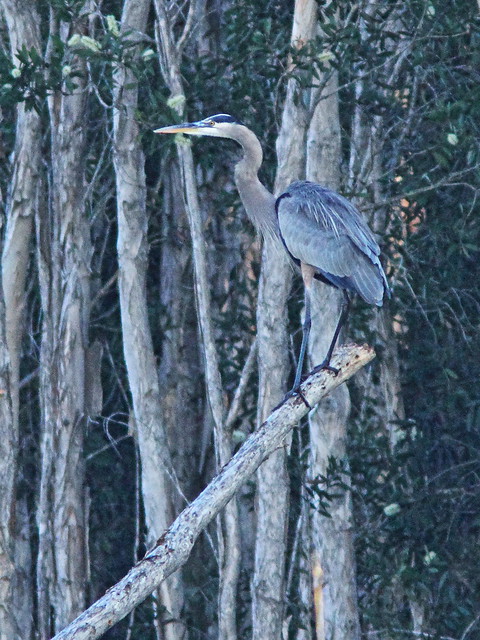
While I was enjoying the herons an Osprey flew by and oddly seemed more intent on what was behind him than looking where he was headed:
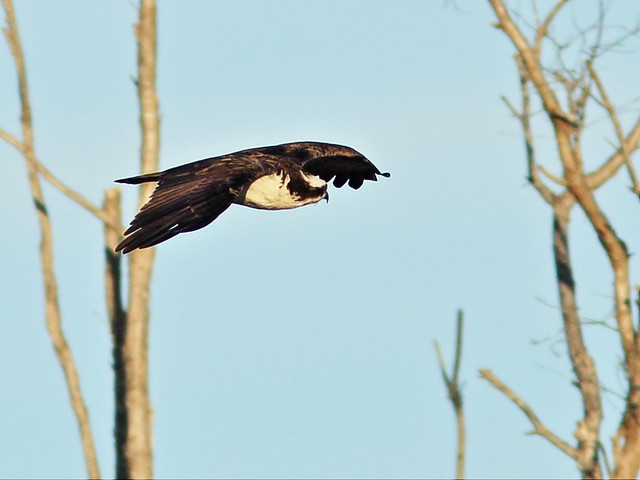
I looked there as well and to my utmost surprise saw two large dark birds in a dead Melaleuca tree about 0.2 mile (320 meters) away. They had flown in while I was busy with the heron, and they were adult Bald Eagles! The one on the right was noticeably larger, a female:
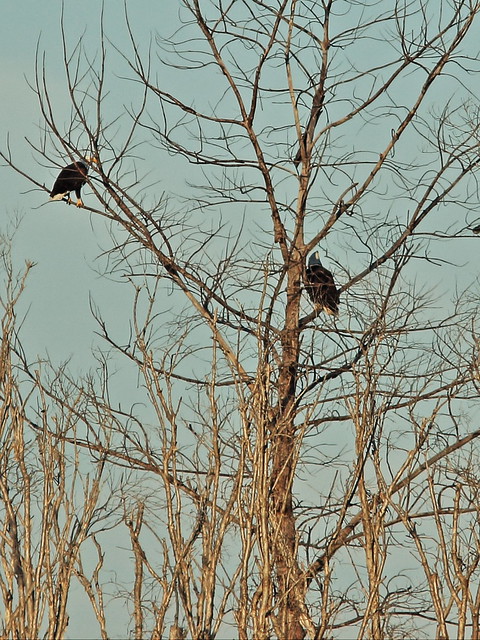
The eagles were at least 0.2 miles (320 meters) distant, and the shadows of the branches partially obscured their features. I was particularly interested in determining whether the female was the new companion of our resident male, but this photo shows the tail to be all white, that of an adult bird:
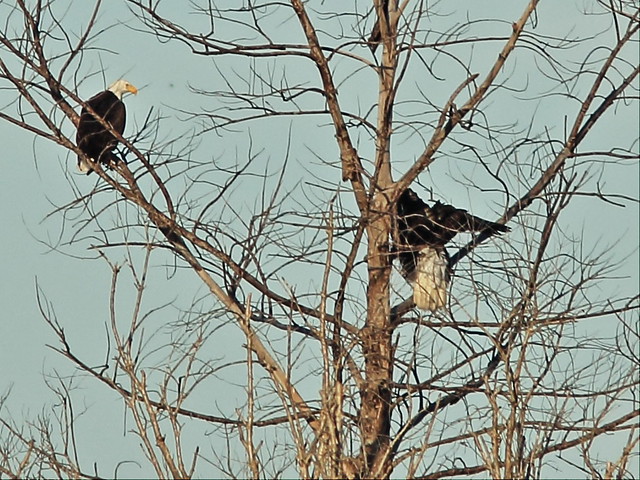
Closely cropped views of the female's tail...
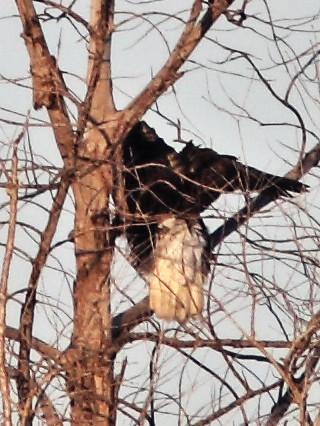
...and head...
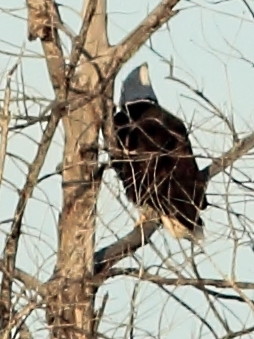
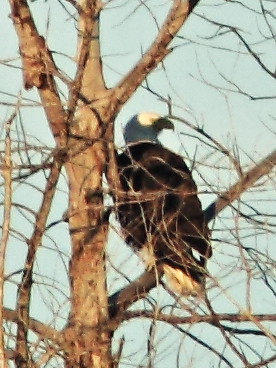
...revealed none of the distinctive dark marks shown by the younger female. Here is a photo of the new female's tail that I took this past week:

The original female (named "Joy") was last documented at the nest on October 30. On November 7th an apparent female roosted near the nest as darkness set in, but the image showed her right leg hanging down with the talons possibly distorted. Although the reason for the original female's disappearance is unknown, it is possible that she had suffered an injury. Earlier this year the nest observers noted that she often dangled one of her legs. I captured this image of her on January 11, 2014:
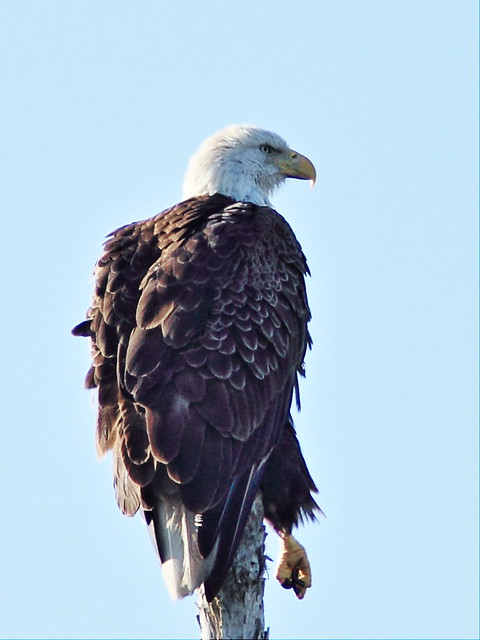
So, the mystery deepens. Were my photos simply not sharp enough to determine the age of this female that was with the male today? Is Joy still alive and in the area of the nest? Is it possible that the new female drove her away?































































